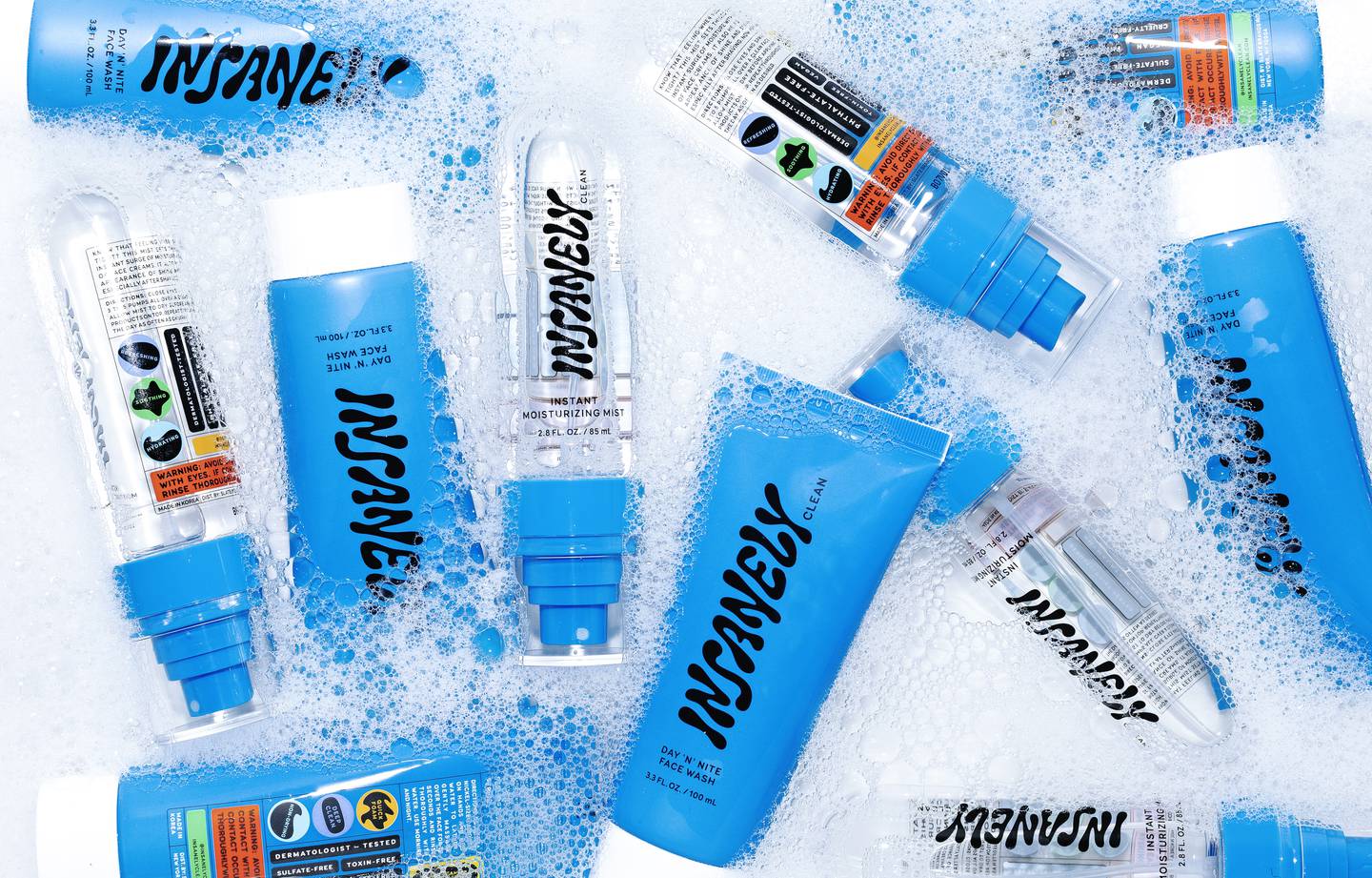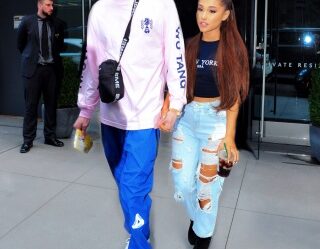
When InnBeauty Project launched in November 2019, it was one of the first beauty lines to market itself as exclusively for Gen-Z.
Though its founders, beauty veterans Alisa Metzger and Jen Shane, fell squarely in the Millennial demographic, for their brand they adopted an unapologetic, more-is-more aesthetic and an affordable price meant to appeal to the under-20 customer. Products like Face Glaze, a highlighting cream, and Slushy, a hydrating serum, packaged in neon green and yellow, emphasised a sense of playfulness for under $30 a bottle.
What was relatively novel in 2019 is mainstream now. InnBeauty inked a deal to be sold at Sephora in April 2021. On Tuesday, the brand announced a $12 million Series B funding round led by Alliance Consumer Growth. And InnBeauty Project is hardly the only Gen-Z beauty brand grabbing attention. Last month, Topicals, a brand for chronic skin conditions, closed a $10 million round led by Cavu Consumer Partners. In January 2022, Oddity Tech, the parent company of colour cosmetics line Il Makiage and its new Gen-Z beauty and wellness brand SpoiledChild, closed a $130 million round, valuing the company at $1.5 billion. Smaller Gen-Z focused brands are raising money too: grooming brand Frontman and Experiment Beauty, a sustainable beauty line known for its reusable sheet mask, raised $1.2 million and $1 million, respectively, earlier this year.
InnBeauty will be using its capital to fuel a greater footprint in Sephora and expand to Sephora Canada. Topicals is also focused on international retail expansion, with a focus on Africa.
These brands are gaining traction by doing the opposite of their millennial-focused predecessors. In the 2010s, direct sales were the future; now, brands angle for space at a major retailer within a year or two after hitting the market — if they don’t launch with one in the first place. Where Glossier’s white boxes and sans-serif font made its website and stores feel almost unattainably cool, the bright, bold packaging of Gen-Z brands is designed to pop on Sephora’s Next Big Thing wall.
“I think what made early Gen-Z direct-to-consumer brands successful is that they knew that consumers didn’t want that millennial, hyper minimalism that was devoid of emotion,” said Larry Milstein, co-founder of next gen marketing agency Przm. “Consumers wanted brands that had a strong perspective, that emphasised community and the people behind it, not a hero product.”
An Energetic, Imperfect Aesthetic
Faded, a serum for dark spots and discolouration sold by Topicals, features a pink, toothpaste-like tube accented with reds and brighter pinks, while High Roller, an ingrown hair treatment, comes in a pale blue bottle with orange lettering. Models are people of colour, happily flaunting their dark spots alongside electric blue eyeliner and glossy lips.
Olowe at 26 is on the outer edge of Gen-Z. But Topicals’ idea is to stand out in a crowded skin care market, a message that jibes with the brand’s mission to address skin care issues once reserved for the dermatologist office.
“I’ve never wanted to be a trendy brand … I’m chasing what the customer wants,” said Olowe. “We’re creating trends … when we look back on skincare, people will say the industry is different because of Topicals.”
Bucking the trend is becoming a trend in itself: new brands are coming up with their spin on the “imperfect” aesthetic to grab consumers’ attention.
Insanely Clean, a Gen-Z skincare brand geared towards males that launched on Nov. 30, features bright blue branding and squiggly italicised lettering in hopes it will resonate with young customers. SpoiledChild’s multicoloured, metallic hair and skincare vials resemble pills.
But as more brands co-opt neon green or bubble letters, the question is whether they can retain customers’ attention too. Brands like Topicals, founded in 2020 and therefore a relative veteran in the space, has an advantage.
“More than any previous generation, the Gen-Z trend cycle is so much more accelerated, where something that was trendy six months ago or three months ago has become quickly ubiquitous, discussed and unpacked. The risk for business is if you are basing your entire visual identity around what’s hot now, like early cyber nostalgia or Y2K, one can appear very dated, very fast,” said Milstein.

Deploying Capital
As Gen-Z beauty goes from niche to the norm, brands are using investment dollars to solidify their positions in the market.
InnBeauty Project’s latest fundraise will be used to increase awareness in Sephora stores as well as fuel a Sephora Canada expansion. Sampling will be a key component: the brand aims to distribute 400,000 samples of its 10+10 moisturiser, Green Machine serum and Retinol Remix into the hands of Sephora and its own website’s customers next year, Metzger said. The company is also planning to hire talent to lead the Sephora business and to transform its e-commerce site into an education-focused digital headquarters.
But as higher gas prices and mortgage rates leave consumers with little room for non-essentials, InnBeauty Project is using sampling to emphasise its value proposition.
“We know there’s less disposable income,” said Metzger. “We’re about to see a lot of trading down where people may be loyal to something that is their core to their routine, but want to explore new products like retinol at a more sensible price.”
Topicals is focused on international expansion, and plans to sample and sell products at Afrochella, an event in Ghana focused on African entrepreneurs and creatives, later this month. Olowe is the daughter of Nigerian immigrants. It also plans to spend more on bigger inventory orders to support existing products and new launches.
“We’ve been selling out since we launched,” Olowe said. “Selling out is really cute when you’re a fashion brand and can manipulate the price, but for a beauty brand, we make money only when we sell a product.”
Moving Past Gen-Z
SpoiledChild launched in February with 17 products, including a F38+ Anti-Aging Retin + Night Rewind Serum, $69, and S33+ Anti-Aging Collagen Burst Serum, $59, that might seem out of place at a brand mainly targeting wrinkle-free teenagers.
The brand is built around the idea of “preventative beauty,” said Suzanne Fitzpatrick, co-general manager, and emphasises “age control.” Its website includes the slogans “age is an old idea” and “mature in reverse.”
The messaging is designed to insulate the brand from ever-evolving TikTok trends and shifts in consumer preferences.
More Gen-Z beauty brands are stretching beyond their initial customer base. InnBeauty Project launched its Retinol Remix in May. Though the brand prides itself on affordability, the product retails for $48 — a price point better suited to slightly older Sephora customers. Metzger said InnBeauty’s biggest demographic is 18 to 35, straddling the Gen-Z and Millennial generations.
“When we first started, we were that Gen-Z brand … but the Sephora consumer is in her late 20s to 40s,” she said.
Olowe contends that Gen-Z has less to do with age than mindset. The brand went through a refresh in August to feature more mature skin in its marketing.
“Gen-Z doesn’t mean you are a specific age. You’re someone who believes that skin care is a journey and your routine is ever evolving,” she said. “We don’t have to be everything to everyone, but we have to be everything to our customer.”



